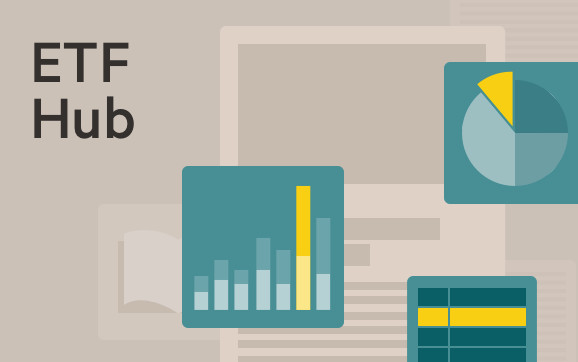ETF industry observers advise caution when adjusting portfolios

Simply sign up to the Exchange traded funds myFT Digest -- delivered directly to your inbox.
Latest news on ETFs
Visit our ETF Hub to find out more and to explore our in-depth data and comparison tools
Passive investors whose ethos is to try to take very long-term views on their portfolio construction face some hard choices.
This year, a record number of people globally will go to the polls, conflicts in Ukraine and the Middle East show no signs of abating and on a purely technical basis investors have to ask themselves whether the US market, which tends to have a heavy weighting in many portfolios, can continue to trade at record highs.
Andrew Prosser, head of investments at InvestEngine, a UK neobroker that provides DIY and model portfolio solutions using ETFs, advises patience.
“A useful starting point when making investment decisions is to remember that the market, while not perfectly efficient, is incredibly difficult to beat — even for the professionals,” said Prosser.
He pointed to the latest updates to long-running research by S&P Dow Jones Indices which shows that over 15 years more than 90 per cent of actively managed large-cap funds underperformed the S&P 500, and that even over a one-year measure ending in June 2023 only 40 per cent of such funds managed to outperform their benchmark.
Prosser said a case could be made for reducing exposure to the Magnificent Seven — Alphabet, Amazon, Apple, Meta Platforms, Microsoft, Nvidia and Tesla — given that their combined market cap was now the same size as the combined Japanese, Canadian and UK equity markets. But he added that the companies could be trading at a premium justified by their expected earnings.

If passive investors did decide to reduce their exposure to these companies, Prosser said they should “avoid making radical changes”.
Despite widespread fears that the US market is overvalued, Nutmeg, the UK-based digital wealth platform which uses ETFs to build client portfolios, is also comfortable with prevailing price levels.
“Against the broader consensus calls for a slowdown in the US economy going into 2024, we have been positioned for a more robust US economic backdrop since the autumn,” said James McManus, head of investments at Nutmeg.
He said Nutmeg was forecasting a soft landing for the US economy, and recommended the iShares S&P 500 UCITs ETF (CSPX) for UK-based investors looking at US large caps, and the JPMorgan BetaBuilders US Small Cap Equity UCITs ETF (BBSD) for small caps.
McManus said that in Nutmeg’s view, the biggest risk to US equities was a rise in bond yields.
“We think the market has been too aggressive at the beginning of January by pricing in 1.5 per cent of interest rate cuts by the turn of 2025,” said McManus.
Brian Kraus, senior vice-president of systematic ETFs at Hartford Funds, said investors would nonetheless be wise to focus on the gap between US and non-US valuations.
“Non-US stocks typically trade at a discount to US stocks and today that discount is deeper than it has been in a long time,” Kraus said, adding that the S&P 500 was now at a 12-month trailing price/earnings ratio of around 23 vs a 20-year average of 18.
He compared the S&P 500’s pricing with the MSCI EAFE index, which includes equities from 21 developed markets excluding the US and Canada. That index is currently trading at a price/earnings ratio of around 14 vs a 20-year average of 15.
With the backdrop to 2024, Kraus said investors should expect to have to hold on to their broader strategy during a bumpy ride.
“Market participants don’t like uncertainty. Geopolitical risk — we currently have two wars, both of which have a myriad of potential timelines and outcomes — the US election and central bank policy risk all add up to a lot of uncertainties,” he said.
However, Prosser pointed out that while the conflicts were “serious and tragic on a human level”, markets tend to “remain focused on corporate earnings growth and economic fundamentals which have, perhaps surprisingly, driven markets higher during times of war”.
In terms of potential political change, he said there were different lessons to draw from history. He pointed to academic research which found that in the US, going back to 1929, the average annualised return for the US stock market under Democrat governments had been just under 13 per cent per year vs 5 per cent under Republicans.
Latest news on ETFs

Visit the ETF Hub to find out more and to explore our in-depth data and comparison tools helping you to understand everything from performance to ESG ratings
However, the academics had found that this result appeared to be country specific and a study of 24 OECD countries and 173 governments found there were statistically no significant differences in returns between left-wing and right-wing governments either in the election period or throughout the tenure.
The divergent views, particularly on what to expect from US equity returns, might pose some dilemmas, market observers agree.
However, Jim Masturzo chief investment officer, multi-asset strategies, at Research Affiliates, the smart beta index specialist, urges patience.
He writes in a research note that “we do not expect equity exposure, especially US equities, to be nearly as profitable in this decade as it was in the last”.
But he adds: “A decade dominated by strong returns from a small subset of US growth stocks doesn’t warrant a revamped approach. It didn’t make sense to abandon valuations and conditional return expectations in 2000 at the peak of the tech bubble or in 2009 at the bottom of the global financial crisis and it doesn’t make sense to do so now.”
Like Prosser, he argues “patient investors . . . will ultimately be rewarded”.
Comments